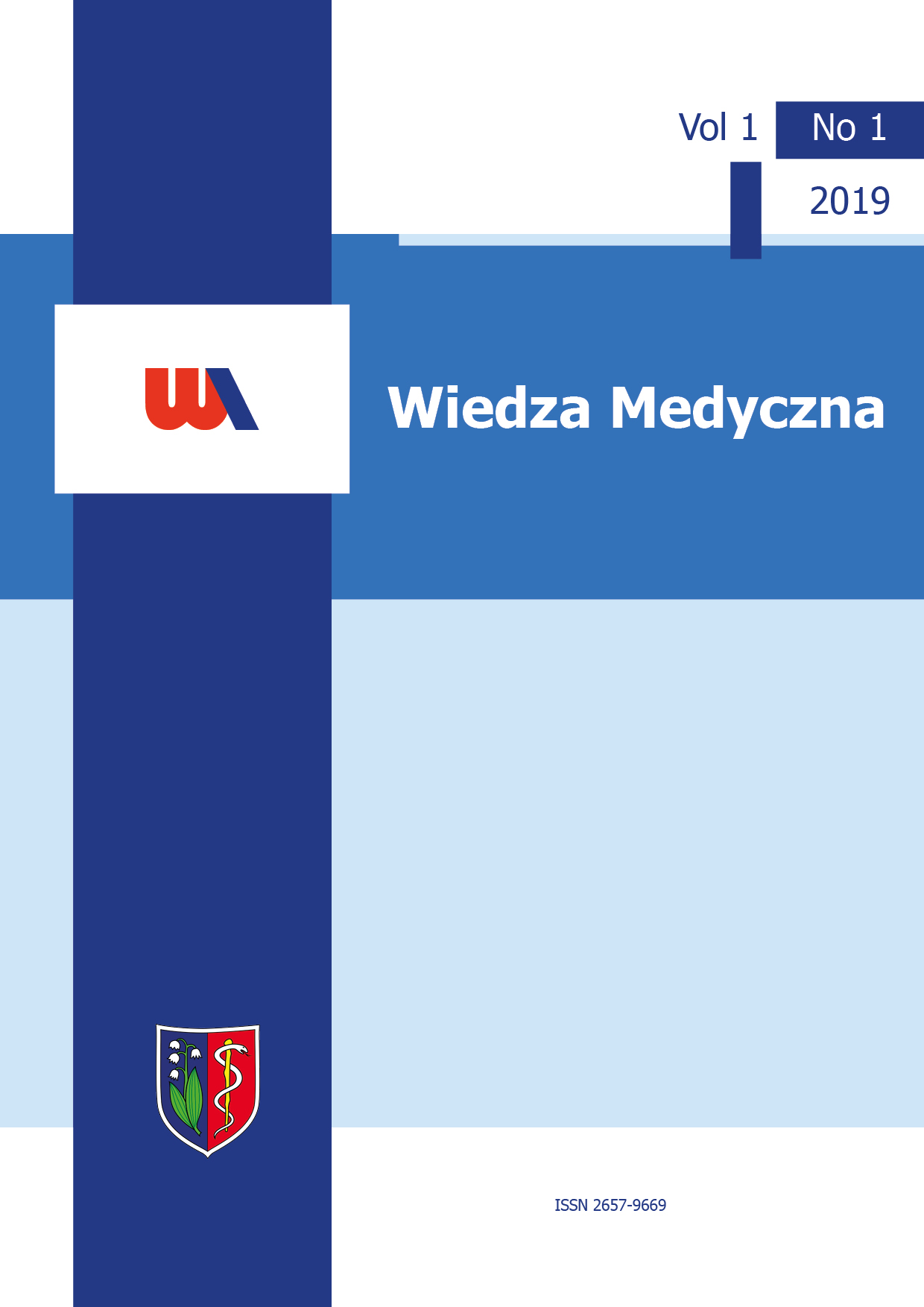Abstrakt
Czerniak wciąż pozostaje potencjalnie śmiertelną chorobą, pomimo dostępności zaawansowanych metod diagnostycznych i nowoczesnych opcji terapeutycznych. Czerniak jest nowotworem wywodzącym się z neuroektodermalnych komórek melanocytowych. Standaryzowany współczynnik zachorowalności w Polsce wynosci 4,9 na 100 000. Czerniak błon śluzowych jest rzadką formą tego nowotworu dotyczącą 2% rozpoznań. Szybka diagnostyka i leczenie chirurgiczne jest kluczem do zmniejszenia śmiertelności. W przypadku obecności przerzutów odległych terapia systemowa jest konieczna. Jednak lek o wysokiej skuteczności nie jest jeszcze dostępny. W opracowaniu przedstawiono najważniejsze aspekty czerniaka, aby zwiększyć świadomość wśród lekarzy różnych specjalności. Pozwoli to uniknąć przeoczenia rozpoznania czerniaka.
Bibliografia
(1) Rutkowski P, Wysocki PJ, Nasierowska-Guttmejer A, Fijuth J, Kalinka-Warzocha E, Świtaj T et al. Cutaneous melanoma – guidelines for diagnostics and therapy in 2016. Dermatology Review 2016; 103(1):1-18. DOI:10.5114/dr.2016.57736.
(2) Rastrelli M, Tropea S, Rossi CR, Alaibac M. Melanoma: epidemiology, risk factors, pathogenesis, diagnosis and classification. In Vivo 2014 Nov-Dec; 28(6):1005-11.
(3) Matthews NH, Li WQ, Qureshi AA, Weinstock MA, Cho E. Epidemiology of Melanoma. In: Ward WH, Farma JM (eds). Cutaneous Melanoma: Etiology and Therapy. Codon Publications. Brisbane (AU); 2017 Dec 21.
(4) Rigel DS. Epidemiology of melanoma. Semin Cutan Med Surg 2010; 4: 204-209.
(5) Lasithiotakis K, Leiter U, KrügerMacKie RM, Hauschild A, Eggermont AM. Epidemiology of invasive cutaneous melanoma. Ann Oncol 2010; 20 (Suppl 6): vi1-7.
(6) Lerner BA, Stewart LA, Horowitz DP, Carvajal RD. Mucosal Melanoma: New Insights and Therapeutic Options for a Unique and Aggressive Disease. Oncology (Williston Park) 2017 Nov 15; 31(11):e23-e32.
(7) Chang AE, Karnell LH, Menck HR. The National Cancer Data Base report on cutaneous and noncutaneous melanoma: a summary of 84,836 cases from the past decade. The American College of Surgeons Commission on Cancer and the American Cancer Society. Cancer 1998; 83:1664-78.
(8) McLaughlin CC, Wu XC, Jemal A, et al. Incidence of noncutaneous melanomas in the U.S. Cancer 2005; 103:1000-7.
(9) Elwood JM, Jopson J. Melanoma and sun exposure: an overview of published studies. Int J Cancer 1997; 73: 198-203.
(10) Markovic SN, Erickson LA, Rao RD, Weenig RH, Pockaj BA, Bardia A, Vachon CM, Schild SE, McWilliams RR, Hand JL, Laman SD, Kottschade LA, Maples WJ, Pittelkow MR, Pulido JS, Cameron JD, Creagan ET and Melanoma Study Group of the Mayo Clinic Cancer Center. Malignant melanoma in the 21st century, part 1: epidemiology, risk factors, screening, prevention, and diagnosis. Mayo Clin Proc 2007; 3: 364-380.
(11) Titus-Ernstoff L, Perry AE, Spencer SK, Gibson JJ, Cole BF and Ernstoff MS. Pigmentary characteristics and moles in relation to melanoma risk. Int J Cancer 2005; 116: 144-149.
(12) Gandini S, Sera F, Cattaruzza MS, Pasquini P, Abeni D, Boyle P and Melchi CF. Meta-analysis of risk factors for cutaneous melanoma: I. Common and atypical naevi. Eur J Cancer 2005; 41: 28-44.
(13) Watt AJ, Kotsis SV and Chung KC. Risk of melanoma arising in large congenital melanocytic nevi: a systematic review. Plast Reconstr Surg 2004; 113: 1968-1974.
(14) Pellacani G, Cesinaro AM, Seidenari S. Reflectance-mode confocal microscopy of pigmented skin lesions – improvement in melanoma diagnostic specificity. J Am Acad Dermatol 2005; 53, 979-985.
(15) Edge SE, Byrd DR, Carducci MA, Compton CA, eds. AJCC Cancer Staging Manual. 7th ed., NY: Springer. New York 2009.
(16) Carvajal RD, Spencer SA, Lydiatt W. Mucosal melanoma: a clinically and biologically unique disease entity. J Natl Compr Canc Netw 2012; 10:345-56.

Utwór dostępny jest na licencji Creative Commons Uznanie autorstwa 4.0 Międzynarodowe.


